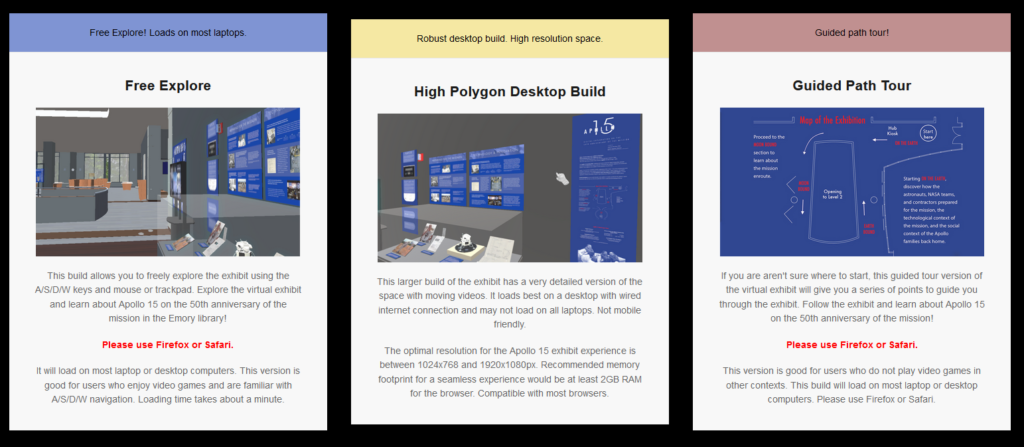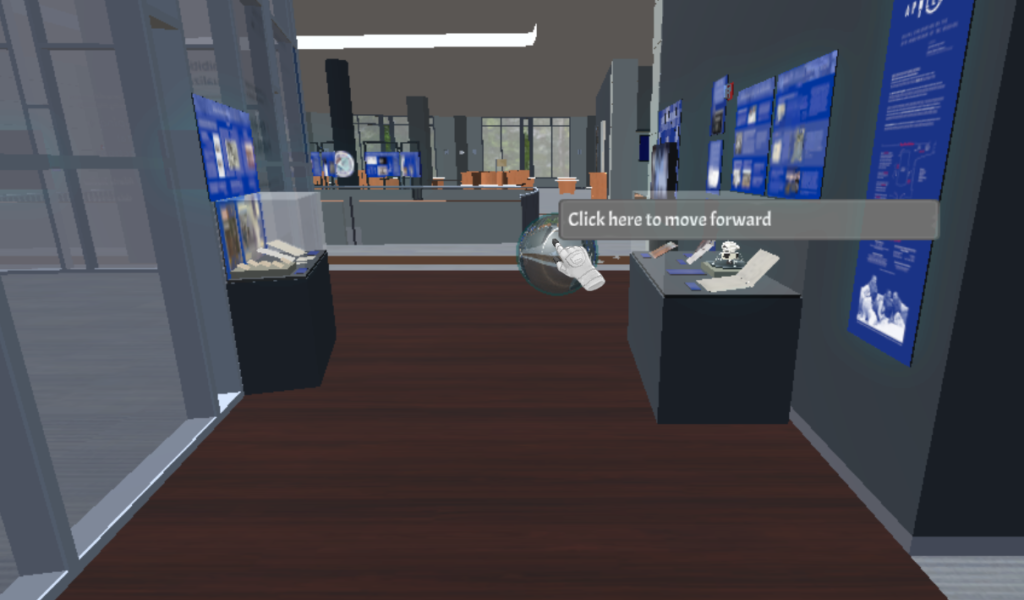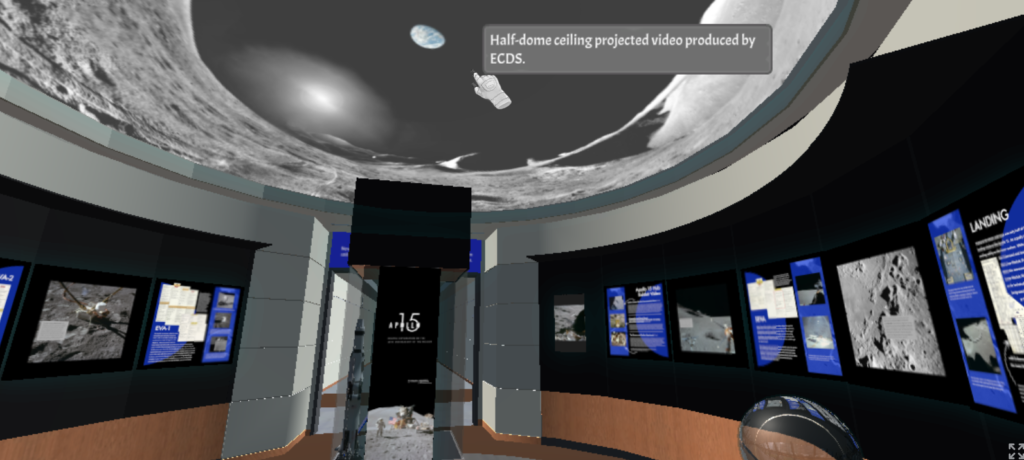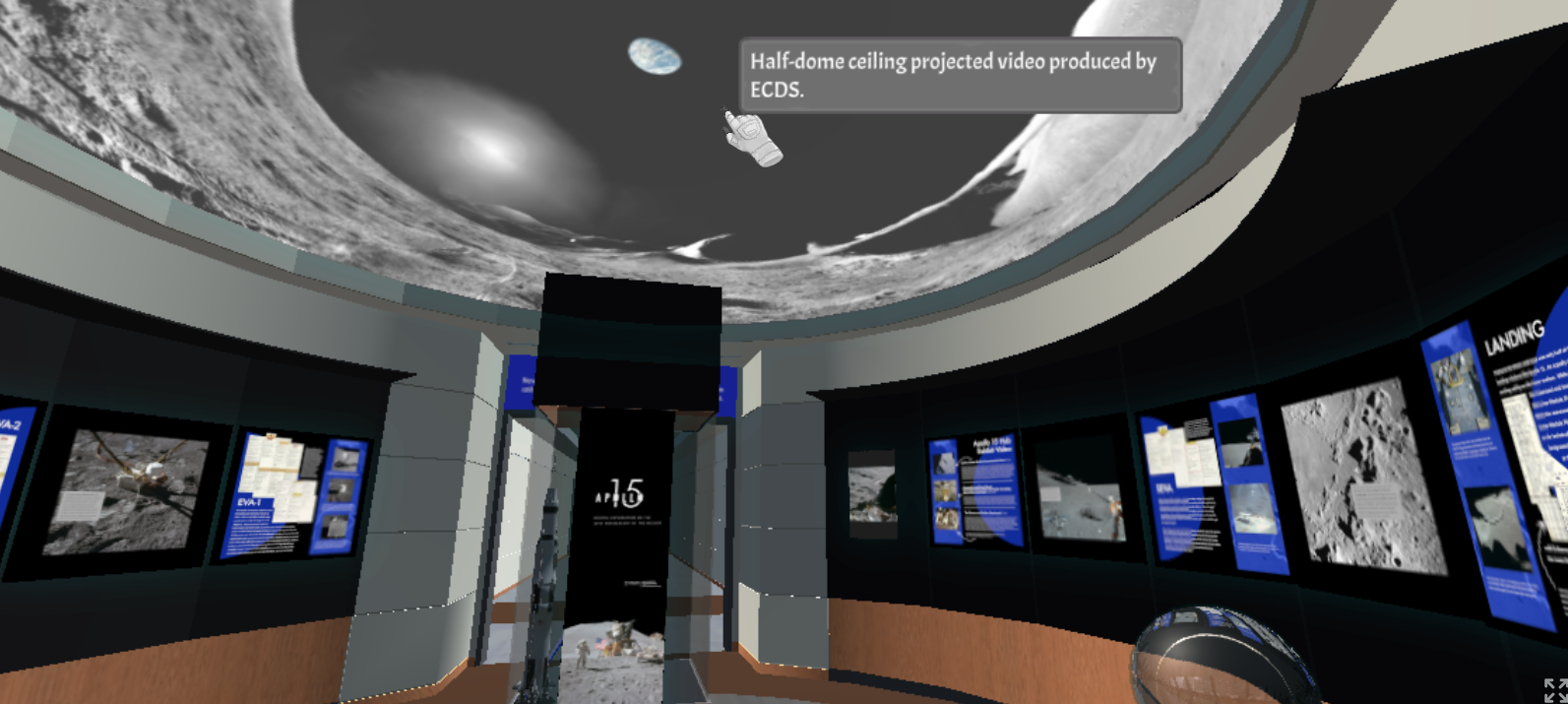The in-person exhibit, titled “Apollo 15: Digital Exploration on the 50th Anniversary of the Mission,” opened in the summer of 2021 on the 3rd floor of Woodruff library, designed under the guidance of Kathryn Dixson and John Klingler, and curated by Dr. Joanna Mundy and graduate fellow Sarah Warren of ECDS. ECDS is excited to announce a guided virtual tour in interactive 3D!
ECDS has produced three versions of a Virtual Apollo 15 exhibition in order to provide options that work on most computers. Created using a detailed 3D model of the library exhibit by John Klingler, combined with an interactive Unity environment by Dr. Arya Basu, the virtual exhibition provides a remote opportunity to explore. The virtual exhibition has given us the opportunity to preserve the work of the library exhibitions team and the Apollo 15 Hub team in the creation of this exhibit, so that it can continue to be used by visitors and in classes. The virtual exhibit is hosted online through the Apollo 15 Learning Hub (https://apollo15hub.org/), which was launched in summer 2021, as well (read about the launch).

- The first option is a lighter weight streaming option that allows the user to explore the exhibit freely in a game-play style experience on most laptops. You do need to use Firefox or Safari browsers.
- The second free exploration option shows the maximum amount of detail, playing through a more robust desktop build. This requires a more robust desktop computer, but it will run in all browsers.
- And a third option provides a guided path tour for users who do not desire a game-play free explore experience. In the guided version, a user can select a glowing orb to be taken to the next stop in the exhibition. Each orb will guide the user, beginning at the entrance to ECDS around the exhibit in sequence, through each phase of the exhibit, on the Earth, Moon bound, on the Moon, Earth bound, and back home.

Some instructions for use of the Virtual Exhibit:
- Navigation:
- Click on each transparent ball to advance to the next point in the exhibition!
- The mouse or trackpad will let you look around. The A key will rotate left, and the D key will rotate right.
- The interaction points (at each ball) will lead you in order through the exhibit. If you want to revisit a point, you can continue through the exhibit, and it starts over from the beginning.
- Zoom:
- Use the Z key to zoom in and out.
- Pause:
- Hit the “Esc” (escape) key for the pause menu. Access the mouse sensitivity settings under the gear icon. Also, use the pause menu to reposition your cursor.
Throughout the virtual exhibit, at each interaction point, you can click on every item or label in a case, as well as all the posters, to deep zoom, read, and examine the artifacts.
Experience the atmosphere of the exhibition space virtually through this Unity interactive streaming build! This space was created to bring life to the virtual event and give virtual visitors the experience of visiting the exhibition. Dr. Arya Basu and Dr. Steve Bransford worked to create accurate 360 degree photographs of the exterior world, moving outside the library windows, and Basu added audio providing a sense of the real library space.

